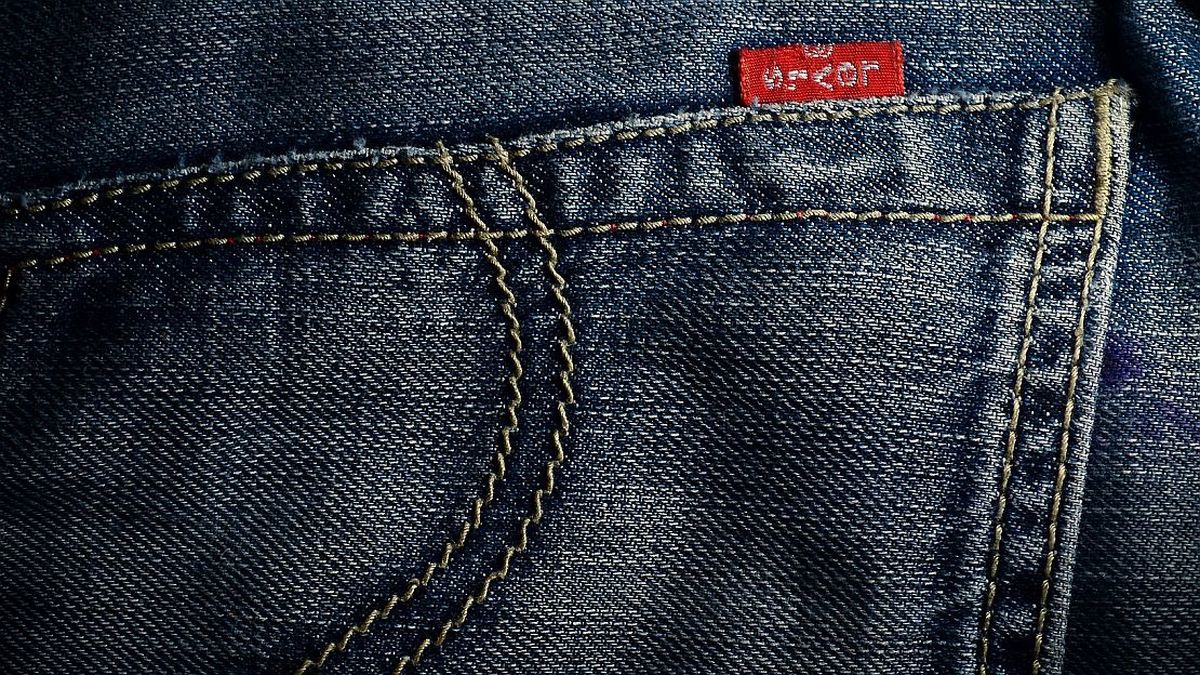The history of Levi’s began in 1853, when Levi Strauss, a German immigrant, moved to San Francisco during the gold rush. Initially selling fabric and other supplies, Strauss soon realized the urgent need for durable clothing for the miners.
In collaboration with Jacob Davis, a Reno tailor, Strauss patented in 1873 the use of copper rivets in the stress points of pants, which led to the birth of the original jeans, then called waist overalls. This innovation led to the creation of the famous model 501.
Although Levi’s jeans were conceived as work clothing, their robustness and comfort caught the attention of other groups. beyond the mining field. Pants became the favorite clothing of cowboys, farmers and industrial workersestablishing Levi Strauss & Co. as an essential manufacturer of clothing for America’s workers.
From cattle rodeos to the recitals of young rebels
It was not until the mid-20th century when Levi’s jeans They made the leap from work clothes to popular fashion. During the 1950s and 1960s, Levi’s 501s began to become a garment that symbolized youthful rebellion.
The transition began when movie stars like James Dean and Marlon Brando They adopted them in their roles as rebellious youth. In films like “Rebel Without a Cause” (1955), Dean wore jeans and a white T-shirt, a combination that inspired an entire generation to challenge established norms.
In addition to cinema, music was also key in the rise of Levi’s as a youth icon. Jeans became the garment of choice for rock musicians, who saw in them a statement of identity.
Bands like The Rolling Stones, The Doorsand artists like Elvis Presley They popularized the image of the rocker in tight jeans, a T-shirt and a leather jacket, cementing Levi’s as the preferred garment of young nonconformists. The English of The Who They included mention of these jeans in their famous album Quadrophenia.
The 1960s and 1970s were decades of radical social and cultural change in the United States and the rest of the world, and Levi’s was at the center of this transformation. Jeans became a distinctive garment of the hippie movement.
During the civil rights protests and demonstrations against the Vietnam WarLevi’s 501s were a constant. The simplicity of the garment and its association with workers symbolized a connection with the people and a disconnection from excessive consumerism.
It was during these years that Levi Strauss & Co. started experimenting more with design. Jeans stopped being simply functional pants and began to be a style statement.
Hippies personalized their jeans with patches, embroidery and dyeing, making each pair a unique piece. This creative spirit was adopted by the companywhich began to diversify its product line, launching different cuts and styles to meet the changing tastes of young people.
During the ’70s, the punk movement emerged in New York and London, and with it, Levi’s found another home within the counterculture. Punks were looking for a look that broke with established canons and Levi’s jeans, generally worn, torn and decorated with pins hookbecame a fundamental part of his aesthetic.
Bands like The Ramones and The Clash They wore them as part of their daily attire, contributing to Levi’s being seen as a symbol of provocative attitude and defiance of the system.
Levi’s took advantage of this cultural wave by launching products that aligned with the punk spirit, such as pre-washed, distressed and cut jeans, with the aim of attracting young consumers who were looking for an expression of their nonconformity and rebellion through fashion. .
The simplicity of the Levi’s design allowed each person to put their own touch, making them part of an individualistic customization movement.
The great step from street culture to high fashion
In the 90s, Levi’s redefined its role in fashionthis time with grunge, a musical and cultural movement that emerged in Seattle. Artists like Kurt Cobain, from Nirvana, They popularized a careless and anti-glamour aesthetic that made intensive use of garments such as Levi’s jeans, which were combined with frieze shirts and worn T-shirts. This was a decade when Levi’s distanced itself from the tight denim image and embraced the relaxed, carefree style of grunge.
As grunge captured the public’s interest, Levi Strauss & Co. found itself in a new role: being the brand of disenchanted youth, of those that did not fit with mainstream fashion nor with the standards imposed by society.
The versatility of Levi’s allowed them to adapt to this new context effortlessly, once again consolidating them as a benchmark of rebellion and authenticity.
With the arrival of the 21st century, the Levi’s brand faced new challenges. As the fashion world became more globalized and competitive, Levi’s had to find ways to stay relevant.
The trend toward “vintage” fashion helped revitalize the brand. Levi’s jeans in classic models began to be sought after by consumers who valued the authenticity and history of each garment.
The collaborations with high fashion designerssuch as capsules with brands such as Vetements and Supremehelped position Levi’s as a garment that could move effortlessly between the everyday and the exclusive.
Music festivals, such as Coachellaalso played a role in modernizing Levi’s image, becoming synonymous with the laid-back, bohemian style of festival-goers.
This, combined with greater environmental awarenessled Levi Strauss & Co. to adopt sustainable initiatives, such as the “WaterLess” line, which uses less water in the production of jeansdemonstrating that the brand can evolve over time without losing sight of its core values.
Source: Ambito
I’m a recent graduate of the University of Missouri with a degree in journalism. I started working as a news reporter for 24 Hours World about two years ago, and I’ve been writing articles ever since. My main focus is automotive news, but I’ve also written about politics, lifestyle, and entertainment.




